We kick off the new week with the following stories...
Be safe out there!
Tom
-
Unexpected closure of the Guayaquil airport runway: what happened?
An incident occurred at the Guayaquil airport terminal on the afternoon of Sunday, November 16.
Edison Andrés García Yépez
The runway at José Joaquín de Olmedo Airport in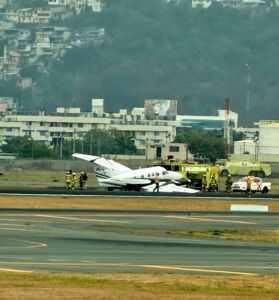 Guayaquil remained closed for several minutes on the afternoon of Sunday, November 16, due to an incident involving a small plane.
Guayaquil remained closed for several minutes on the afternoon of Sunday, November 16, due to an incident involving a small plane.
According to the account Aviación Guayaquil, which covers aviation issues in the port city, operations at the airport were temporarily suspended due to an incident on the runway, involving a Beechcraft King Air 90 aircraft.
The incident occurred around 4:00 PM. Images shared by Aviación Guayaquil en X show airport personnel and emergency teams working to stabilize the aircraft on the runway.
The work lasted for about an hour. Tagsa , the concessionaire of the José Joaquín de Olmedo airport, confirmed to EXPRESO that the affected aircraft was removed from the runway, which was subsequently cleaned and reopened at 5:59 p.m.
José Joaquín de Olmedo Airport: Were there any flight cancellations?
After 6:00 PM, operations at the Guayaquil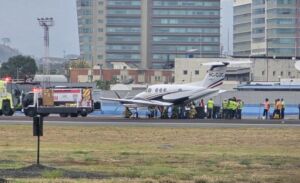 terminal returned to normal. However, during the runway closure, there were delays and diversions for several flights.
terminal returned to normal. However, during the runway closure, there were delays and diversions for several flights.
For example, three flights arriving from Quito were unable to land due to the incident. A plane departing for the Ecuadorian capital from Guayaquil airport was also unable to take off.
Likewise, other flights bound for New York and Santiago had to wait several minutes before taking off from Guayaquil.
https://www.expreso.ec/guayaquil/cierre-inesperado-de-la-pista-del-aeropuerto-de-guayaquil-que-paso-264706.html
Two dead after plane crashes in Henry County
Roger Henricks, 85, of Napoleon, and Terry Henricks, 82, of Archbold, were both pronounced dead at the scene about two miles south of the village of New Bavaria.
Author: Andrew Bailey
HENRY COUNTY, Ohio — Two men died after their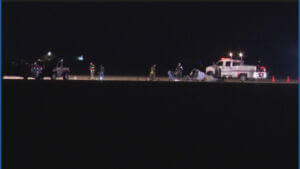 plane crashed into a field in southern Henry County Friday evening, according to the Ohio State Highway Patrol.
plane crashed into a field in southern Henry County Friday evening, according to the Ohio State Highway Patrol.
Roger Henricks, 85, of Napoleon, and Terry Henricks, 82, of Archbold, were both pronounced dead at the scene about two miles south of the village of New Bavaria.
The crash happened at about 5:08 p.m. when the single-engine 2013 Jabiru J230-SP lost altitude during a routine flight and crashed into the field by County Road Y and Township Road 14a, OSHP said in a press release Friday night.
The crash remains under investigation, OSHP said.
Emergency landing in Slaughterville Saturday morning
by: Katelyn Honigsberg/ KFOR, Abigail Franklin / KFOR
SLAUGHTERVILLE, Okla. (KFOR) – Trouble in the air for a University of Oklahoma plane led to an emergency landing in southern Cleveland County Saturday morning.
for a University of Oklahoma plane led to an emergency landing in southern Cleveland County Saturday morning.
“About 9:55 this morning, we got a tone that there was a possible plane crash, or a plane having to make an emergency landing,” said John Shrabel, Assistant Fire Chief for Ceader Country Fire Department. “They gave us the GPS coordinates and pinged it in the middle of the Lexington WMA, we responded with search and rescue to possible extricate.”
Ceader Country firefighters searched for the plane for two hours before they were told it was found at the airport off Slaughterville Road and Highway 7.
The plane landed at McCaslin Airport in Sluaghterville.
“I went back and looked at it, and I didn’t see anything structurally wrong with the plane,” said Shrabel.
The Cleveland County Sheriff’s office told News 4 the plane notified the FAA of engine trouble while in the air, and they made the decision to make an emergency landing.
Once they landed, the engine died.
“Just thank goodness that they do a lot of practice,” said Donald Townsend.
Donald Townsend lives just feet away from the airport. He did not see the incident, but says OU planes practice over Slaughterville all the time.
“They fly up above us here, and once they get to a certain stage, they have to be able to make an emergency landing without engine power,” said Townsend. “They’ll pull the engine back to idle and circle around to line up, you know they don’t ever land but are lined up to land, and the instructor tells them go on and they throw he power on and off, they go.”
Both the student and instructor are okay and were picked up by the university after the incident.
OU confirms it was a mechanical issue that led to the emergency landing.
https://kfor.com/news/local/emergency-landing-in-slaughterville-saturday-morning/
One dead after two small planes collide in southeastern Ontario
By Adam Beauchemin
Ontario Provincial Police say one person is dead after two small planes collided in the air in southeastern Ontario on Saturday at approximately 11 a.m.
after two small planes collided in the air in southeastern Ontario on Saturday at approximately 11 a.m.
According to OPP, the planes collided above Martintown in South Glengarry, which is approximately 100 kilometres southeast of downtown Ottawa.
One of the planes, a Piper Seminole with two pilots, landed safely. The other, a Cessna 172, was located in a wooded area and the pilot, its lone occupant, was found dead.
“After the mid-air collision, the Piper Seminole was able to land safely at Cornwall airport. However, one of the wings separated from the Cessna and the aircraft crashed in the woods,” senior investigator of Transportation Safety Board of Canada Jean-Pierre Régnie told CTV News Ottawa.
Régnie says the two planes were owned and operated by Cornwall Aviation and were conducting training flights at the time of the collision.
Cornwall SDG Paramedics say the Cessna 172 departed from the Cornwall-Summerstown Regional Airport. Paramedics say a Search and Rescue technician parachuted to the scene.
It’s not clear yet what caused the crash, but the Transportation Safety Board of Canada say they are investigating.
“We will gather information from obviously both pilots, any other witnesses. We will gather weather information, radar information from NAV Canada, and will bring that all back together to try to reconstruct the timeline the sequence of events to be able to figure out what happened and why,” Régnie said.
‘Did I just see something?’
Glen Finbow was in the area opening his business at the time of the incident and says he saw the Cessna falling from the sky.
“I had just finished feeding my alpacas, got to the end of the road to put the sign out and I heard a pop, a bang,” Finbow said. “From there, I turned towards Chapel Road and I saw what looked like a Piper or something coming straight down with one wing missing.”
Immediately after witnessing the incident, Finbow called 9-1-1, advising them to send all the emergency services they could. Finbow then went to help locate the downed aircraft.
“I spent 45 minutes in the bush with a couple of paramedics and firemen walking, trying to work our way through the bush to find the wreckage but we were unsuccessful. But they found it down the 25, I guess a little bit farther,” he said.
At least two others witnessed the incident, Finbow says, and he’s been in contact with the Transportation Safety Board of Canada.
“We all gathered on Chapel Road and were all saying ‘did you see that?’ And I’m thinking ‘did I just see something?’” he said.
Finbow says he’s been left feeling “bent out of shape” after witnessing the tragic incident.
“So many planes are around here all the time and you never see anything but just to know that somebody is going to die and you’re watching it, I’m going to have a hard time sleeping tonight,” Finbow said.
A section of County Road 25 was closed following the incident, but has since reopened.
https://www.ctvnews.ca/ottawa/article/one-dead-after-two-small-planes-collide-in-southeastern-ontario/
NTSB Final Report: Fred L Wellman CH 750 Cruzer
About 5ft Above Ground Level, The Airplane Stalled, And The Left Wing Dropped
Location: Medina, Ohio Accident Number: ERA25LA219
Date & Time: June 5, 2025, 09:00 Local Registration: N75FW
Aircraft: Fred L Wellman CH 750 Cruzer Aircraft Damage: Substantial
Defining Event: Loss of control in flight Injuries: 1 None
Flight Conducted Under: Part 91: General aviation - Flight test
Analysis: The pilot reported that this flight was conducted as part of phase 1 flight testing of the newly constructed experimental amateur-built airplane. The pilot stated that he had watched a video from the airplane kit manufacturer on “factory takeoff,” which suggested keeping the control stick slightly aft of neutral and applying partial power. During the accident takeoff, he tried the method described by the video and when the airplane lifted off, it was too slow. About 5ft above ground level, the airplane stalled, and the left wing dropped. The airplane impacted to the left of the runway and continued into a ditch and an area of brush, resulting in substantial damage to the left wing. The pilot reported that there were no preaccident mechanical malfunctions or failures with the airplane that would have precluded normal operation.
Probable Cause and Findings: The National Transportation Safety Board determines the probable cause(s) of this accident to be -- The pilot’s failure to maintain control of the airplane during takeoff, which resulted in a runway excursion.
FMI: www.ntsb.gov
NTSB Final Report: Vans Aircraft Inc RV-12
Pilot’s Improper Installation Of The Control Stick Pushrod Assemblies, Which Resulted In Separation Of The Left Pushrod And A Total Loss Of Roll Control
Location: Auburn, Washington Accident Number: WPR24FA182
Date & Time: June 6, 2024, 12:00 Local Registration: N412JN
Aircraft: Vans Aircraft Inc RV-12 Aircraft Damage: Substantial
Defining Event: Flight control sys malf/fail Injuries: 1 Fatal
Flight Conducted Under: Part 91: General aviation - Personal
Analysis: While returning to the airport from a routine pleasure flight, the pilot of the experimental lightsport airplane reported a total flight control failure while maneuvering to land. Data from the onboard electronic flight instrument system and witness statements indicated that after turning from the crosswind to the downwind leg, the airplane entered an uncontrolled descending left turn consistent with a spin or spiral, culminating in a collision with a warehouse roof about 0.75 mile from the runway threshold.
Postaccident examination revealed that the left side (where the pilot was operating the airplane) control stick pushrod had become disconnected from the flaperon mixer bellcrank due to improper installation during construction. Both left and right pushrod rod-end eyebolt bearings had been installed in reverse orientation. The improper installation allowed the pushrod to gradually unscrew from its eyebolt, ultimately resulting in complete separation of the left pushrod. This condition rendered the primary roll control system on the pilot’s side ineffective.
The aircraft was equipped with an autopilot system featuring a “Level” mode capable of providing roll control independent of the cockpit control sticks. Prompt activation of this feature—or use of the rudder to counteract the developing roll—would likely have allowed the pilot to retain some degree of control. Similarly, the pilot would have been able to fully control the airplane if he had reached to his right and used the other control stick. However, given the sudden onset and rapid progression of the event, it is unlikely the pilot had sufficient time or situational awareness to identify and employ these options before the airplane entered an unusual attitude and became uncontrollable.
The pilot's autopsy identified heart disease, including severe coronary artery disease of a single coronary artery and mild thickening of the left cardiac ventricle. Although the pilot’s heart disease was associated with an increased risk of sudden impairment or incapacitation from a cardiac event, the circumstances of the accident were not consistent with a sudden medical event and it is unlikely that the pilot’s heart disease contributed to the accident.
The improper assembly error was traced to the original construction of the airplane and was visible in build photographs taken in 2019. The oversight persisted through final inspection and three years of subsequent operation. The airplane kit manufacturer later issued a service bulletin addressing correct installation of the pushrods.
Probable Cause and Findings: The National Transportation Safety Board determines the probable cause(s) of this accident to be -- The pilot’s improper installation of the control stick pushrod assemblies, which resulted in separation of the left pushrod and a total loss of roll control during flight. Contributing to the accident was the failure to detect the installation error during the airplane’s construction, inspection, and subsequent maintenance.
FMI: www.ntsb.gov
NTSB Final Report: Lancair 320
The Experienced Pilot Chose To Operate In Instrument Meteorological Conditions Without An Instrument Flight Rules Clearance
Location: Manitowoc, Wisconsin Accident Number: CEN24FA024
Date & Time: October 25, 2023, 18:29 Local Registration: N320P
Aircraft: Lancair 320 Aircraft Damage: Substantial
Defining Event: Controlled flight into terr/obj (CFIT) Injuries: 1 Fatal
Flight Conducted Under: Part 91: General aviation - Personal
Analysis: The airplane was operated on a personal cross-country flight. Recorded data indicated that the airplane made an approach to an airport but did not land and the airplane apparently diverted due to the instrument meteorological weather conditions (IMC) present at that airport. The airplane then flew toward another airport about 60 nautical miles away. The airplane was aligned with the extended runway centerline but impacted trees and terrain about 2.5 miles from the diversion airport. The weather conditions at the diversion airport were night IMC with a 400-ft ceiling. Data indicated that the originally intended destination was IMC at the time of the airplane’s departure. The pilot did not request weather information from known sources, and it is unknown what weather information, if any, the pilot checked or received before or during the flight. During the flight, the airplane’s transponder beacon code was set to 1200, indicating that the airplane was operating as a visual flight rules flight, and the investigation did not find record of communication with any air traffic control facility.
Based on the flight track data it appeared that the pilot was attempting an approach to the diversion airport when the accident happened. The airplane was configured with one navigation radio that was approved for instrument flight navigation. It also was equipped with a handheld GPS receiver that was capable of monitoring approaches but was not approved for instrument flight navigation. Investigators could not determine which system the pilot was using to navigate.
Examination of the airplane and engine did not reveal any pre-accident mechanical failures or malfunctions that would have precluded normal operation. Exhaust gas temperature recordings from the airplane’s engine monitoring system indicated that the engine was operating at the time of the accident. Additionally, the engine monitor recorded fuel pressure until the end of the recorded data, indicating that the airplane’s engine was still receiving fuel. ADS-B data showed that the airplane was descending at 900 ft/min during the final portion of the flight.
Based on the available information, the experienced pilot chose to operate in instrument meteorological conditions without an instrument flight rules clearance and without communicating with any air traffic control facility. He then executed an unapproved instrument approach. During the approach the airplane descended into trees and terrain. There was no indication of any failure or malfunction of the airplane that contributed to the accident.
Probable Cause and Findings: The National Transportation Safety Board determines the probable cause(s) of this accident to be -- The pilot’s decision to continue the visual flight rules flight into instrument meteorological conditions and failure to maintain clearance from trees and terrain during an unapproved instrument approach. Contributing to the accident was the pilot’s inadequate preflight weather planning.
FMI: www.ntsb.gov
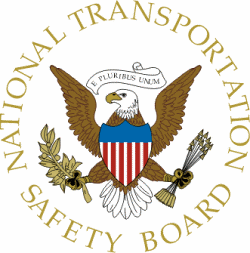
Today in History
12 Years ago today: On 17 November 2013 Tatarstan Airlines flight 363, a Boeing 737-500, crashed following a loss of control while on approach to Kazan Airport, Russia, killing all 50 occupants.
| Date: | Sunday 17 November 2013 |
| Time: | 19:23 |
| Type: | Boeing 737-53A |
| Owner/operator: | Tatarstan Airlines |
| Registration: | VQ-BBN |
| MSN: | 24785/1882 |
| Year of manufacture: | 1990 |
| Total airframe hrs: | 51547 hours |
| Cycles: | 36596 flights |
| Engine model: | CFMI CFM56-3C1 |
| Fatalities: | Fatalities: 50 / Occupants: 50 |
| Other fatalities: | 0 |
| Aircraft damage: | Destroyed, written off |
| Category: | Accident |
| Location: | Kazan International Airport (KZN) - Russia |
| Phase: | Approach |
| Nature: | Passenger - Scheduled |
| Departure airport: | Moskva-Domodedovo Airport (DME/UUDD) |
| Destination airport: | Kazan International Airport (KZN/UWKD) |
| Investigating agency: | MAK |
| Confidence Rating: | Accident investigation report completed and information captured |
Narrative:
Tatarstan Airlines flight 363, a Boeing 737-500, crashed following a loss of control while on approach to Kazan Airport, Russia, killing all 50 occupants.
Flight 363 departed from Moscow's Domodedovo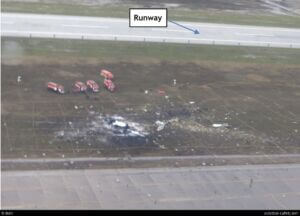 Airport (DME) at 18:20 local time on a scheduled service to Kazan (KZN).
Airport (DME) at 18:20 local time on a scheduled service to Kazan (KZN).
En route the crew noted that their navigation system's map was displaced. During the descent towards Kazan did not ask for vectors from air traffic control and continued their approach, which was flown 4 km to the north of the published approach procedure due to the map displacement issue.
After turning to final for runway 29 the aircraft was not able to capture the localizer. The flight crew programmed a heading of 250° in the HDG SEL (Heading Select mode) of the autopilot and hurriedly configured the aircraft for landing. The approach was unstabilized and as the aircraft turned towards runway heading the copilot noticed the PAPI lights and saw they were too high. He initiated a go around. At that time the aircraft was at 270m (900 ft) and configured for landing with gear down, 30° flaps. The autopilot was in ALT HOLD mode with altitude programmed at 270 m.
The use of the TO/GA switch caused the autopilot to be switched off. The flaps were raised to 15°, but no manual control inputs were made. The increase in engine power and retracting the flaps caused a pitch-up of the airplane with the pitch angle reaching a value of about to 25°. Indicated airspeed began to decrease, the stabilizer automatically trimmed nose down.
All the time the copilot was engaged in radio communications with the Kazan Tower controller. Subsequently the copilot reminded the captain to raise the undercarriage.
With the pitch angle exceeding 25° the crew began using the control column to reduce the pitch angle. At this point, the aircraft was at an altitude of about 600 meters (2,000 feet), and continued to climb with a vertical speed of 20 m/s. Due to nose down input by the captain and trim system, the pitch angle decreased quickly. Vertical loads decreased to 0,5 g as the aircraft had reached the top of climbing at 2300 feet / 700 meters. Indicated airspeed had decreased to its minimum value of 117 knots.
Vertical loads then decreased to about 0 g, with a negative pitch angle reaching 20°. The aircraft descended at a rate of more than 5000 ft/min (25 m/s).
The EGPWS gave "sink rate" and "pull up" warnings as the aircraft pitch angle reached -60° with a load of -0.9 g.
The aircraft collided with the ground at high speed, over 450 km/h, and a large negative pitch angle of about 75°. From the beginning of the missed approach until the collision with terrain, 45 seconds passed.
The aircraft impacted the ground between the runway and the main taxiway about 1850 m past the runway 29 threshold.
Investigation revealed that the captain received training to become a Boeing 737 captain after serving as a navigator between 1991 and 2010. The copilot used to be a flight engineer (1989 to 2008) and was also trained to become a Boeing 737 pilot. The captain had a very limited knowledge of English, which was considered insufficient to comprehend English language training documents and manuals. As the oversight of the training facility was poor, shortcomings in training were not noticed. Training and safety management within Tatarstan Airlines was considered equally poor.
PROBABLE CAUSE (translated from Russian):
The cause of the crash Boeing 737-500 VQ-BBN were systemic deficiencies in the identification of hazards and risk control, as well as a non-functional safety management system in the airline and the lack of control over the level of training of the crew members from the aviation authorities at all levels (Tatar MTU BT, Federal Air Transport Agency), which led to the admission of an unprepared flight crew.
When the missed approach was executed the crew did not recognize the fact that the autopilot was off and the aircraft pitched up to a complex spatial position (Nose up Upset). The PIC's (pilot flying) lack of flying skills in complex spatial positions (Upset Recovery) led to the creation of a large negative overload, loss of spatial orientation and transfer of the aircraft into a steep dive (pitch down to 75°) until the impact with the ground.
The need for a go-around was caused by the position of the aircraft relative to the runway, which was the result of "a map shift" effect (Map shift, an error in the determination of the aircraft position by onboard systems) by about 4 km, the crew's inability in the circumstances to integrated piloting and maintenance of navigation with the required accuracy, and the lack of active assistance of the air traffic control service under the long-term monitoring of significant deviations from the approach procedure.
METAR:
14:30 UTC / local time:
UWKD 171430Z 23009G12MPS 9999 OVC009 03/02 Q0995 R29/2/0055 NOSIG RMK QFE735/0980
15:00 UTC / local time:
UWKD 171500Z 23009G12MPS 9999 -RASN OVC008 03/02 Q0994 R29/2/0055 NOSIG RMK QFE735/0980
Wind 230 degrees at 9m/s, gusting to 12 m/s; light rain, light snow; Overcast at 800 feet; Temperature: 3°C, Dewpoint: 2°C; Pressure: 994 mb
15:30 UTC / local time:
UWKD 171530Z 23008G11MPS 5000 -RASN OVC007 03/03 Q0993 R29/2/0055 NOSIG RMK QFE734/0979
Wind 230 degrees at 8 m/s, gusting to 11 m/s; visibility 5000 m; light rain, light snow; Overcast at 700 feet; Temperature: 3°C, Dewpoint: 3°C; Pressure: 993 mb
